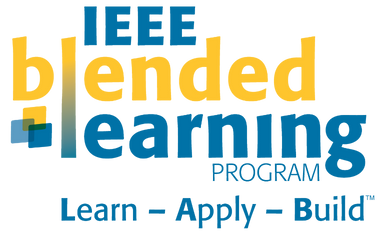

Most industries these days deal with large sets of data of different types. Processing this data manually is usually a headache for them—it’s not just time-consuming but also prone to errors. This is why most industries have turned to AI and machine learning (ML) technologies to resolve this issue and get better ROI on their data management strategies.
According to Statista:
- 49% of respondents considered that using AI and ML for projects was extremely significant.
- Among other IT projects, 28% of respondents stated that AI and ML initiatives were the most important.
This shift has pushed these companies to hire a well-equipped workforce in AI and ML subjects
In this article, we’ll delve into one of the most crucial techniques in ML classification. We’ll explore what classification is, the different classification models, and the best way to learn it. Let’s get into it then:
What is Supervised Learning?
Supervised learning helps machines learn as humans do. When you teach someone new skills, you give examples and correct them if they make mistakes. You use these examples and corrections to help them learn how to do things.
Supervised learning works similarly to ML. You feed the machine both the data it needs to learn from and the correct answers associated with that data. This way, the machine starts recognizing patterns and learning from them.
In supervised learning, you train a model by showing examples. Each example comes with input data and the correct label (the answer). During training, the model looks at the input and the corresponding label, learning to recognize the patterns that connect the two.
Here are some everyday examples of supervised learning
- Credit Scoring: Banks use ML to decide who gets a loan. They train models with data from past borrowers—like how often they paid on time. Then, the model predicts how likely new applicants will repay their loans.
- Disease Diagnosis: Doctors use ML to help diagnose diseases faster by training the machine with medical records and test results. This way the models learn to spot signs of diseases like cancer or diabetes in new patients.
- Recommendation Systems: Do streaming services know what movie or song to suggest next? They use supervised learning and training models with your past watching or listening habits to recommend new stuff they think you’ll like.
What is Classification?
Classification in ML is a method for teaching a program to recognize, understand, and group data into predefined categories, also known as “sub-populations.” It starts with a training dataset where each piece of data is already categorized. The ML model uses this dataset to learn how to identify and classify new data based on learned patterns.
For instance, one common use of classification is in sorting emails into “spam” or “non-spam.”
Here, basically, you train the model on a set of emails that are already labeled as spam or non-spam. It learns the traits and characteristics of what spam versus non-spam is. It then applies this knowledge to new emails it encounters and classifies them accordingly.
Types of Classification Algorithms
Let’s examine some of the common classification algorithms and see how each one works using straightforward examples.
1. Logistic Regression
Logistic Regression is used when the dependent variable is binary—meaning it has only two possible outcomes. It estimates the probability that a given input point belongs to a certain class.
Example: A bank wants to know if a customer will default on a loan. The bank uses logistic regression to analyze past customer data, like income and credit score, to predict whether new customers might default.
2. Naive Bayes
Logistic Regression is used when the dependent variable is binary—meaning it has only two possible outcomes. It estimates the probability that a given input point belongs to a certain class.
Example: A spam filter uses Naive Bayes to classify emails as spam or not spam. It evaluates the presence of certain words in an email (like ‘free,’ ‘winner,’ etc.), assuming they are independent of each other, to decide if the email is likely to be spam.
3. K-Nearest Neighbors
K-Nearest Neighbors operates on a simple principle: objects near each other are similar. KNN classifies a new data point based on the majority class among its closest neighbors.
Example: In a real estate app, KNN helps predict the price category (low, medium, high) of a house based on its proximity to features like schools, parks, and transportation, comparing it to nearby houses whose prices are already known.
4. Decision Tree
A Decision Tree is a flowchart-like model in which every internal node denotes a test on an attribute, every individual branch represents the test result, and every leaf node represents a class label (a decision made after evaluating all attributes).
Example: An e-commerce company uses a decision tree to decide whether to give customers a premium membership based on their purchase history, browsing behavior, and customer support interactions.
5. Support Vector Machines (SVM)
SVMs are supervised learning methods used for regression, classification, and outliers detection. The core idea of SVM is to find a hyperplane that best divides a dataset into two classes.
Example: A human resources system uses SVM to classify applicants into two categories: likely to fit the company culture and unlikely. It analyses various factors from their resumes and interview performances, such as skills, experiences, and demeanor.
Different Types of Classification Tasks in Machine Learning With Real Life Examples
There are various types of classification tasks to explain different scenarios in the real world. This is essential to help the machines make sense of the data they’re given. Let’s look at these types:
1. Binary Classification
Binary classification is the simplest type of classification task. You’ve got two possible outcomes, and the job is to pick one. It’s a straightforward decision: yes or no, true or false, spam or not.
Example: Let’s say a bank wants to know if someone will pay back a loan. The model looks at the person’s past behavior (like previous loans and payments) and says either ‘yes, they’ll pay it back’ (1) or ‘no, they won’t’ (0).
2. Multi-Class Classification
Now, imagine you’re not limited to yes or no questions. Multi-class classification comes into play when there are more than two options.
Example: An app for identifying plants might use multi-class classification. Snap a photo of a plant, and the app could tell you whether it’s a daisy, rose, tulip, or any other type of flower listed in its database.
3. Multi-Label Classification
Sometimes, things aren’t just black and white, or rather, they don’t fit into one single category. Multi-label classification lets each example belong to multiple categories at once.
Example: Consider a news website that categorizes articles. One article might be tagged as Politics, Economy, and Environment all simultaneously because it covers an environmental bill being passed in a political context.
4. Imbalanced Classification
This one tackles the problem when the data isn’t evenly distributed among the categories. One category often has more examples than others, making training a fair model tricky.
Example: Fraudulent transactions are rare compared to normal ones in fraud detection. A model trained on this data must learn to spot these rare instances without being overwhelmed by the huge number of normal transactions.
Learners in Classification Problems
There are primarily two main types of learners: lazy and eager. Let’s take a brief look at what both entails:
1. Lazy Learners
- They wait to learn until they actually need to make predictions.
- The examples include the KNN algorithm and case-based reasoning.
- Though less time is spent on training, prediction takes longer.
2. Eager Learners
- They build a classification model right from the start using the training dataset.
- Examples include Artificial Neural Networks (ANN), Naive Bayes, and Decision Trees.
- More time is invested in training upfront, which speeds up the prediction process.
Classification Vs. Regressionng

Classification and regression are two cornerstone methods in ML, each with distinct objectives and applications. While classification predicts discrete categories, regression forecasts continuous quantities. Let’s look at the difference between them in detail
| Aspect | Classification | Regression |
| Definition | Predicts the category to which data points belong | Predicts a continuous value |
| Output Type | Discrete labels (e.g., yes/no, spam/not spam, dog/cat) | Continuous values (e.g., temperature, prices, age) |
| Use Case Examples | Determining if an email is spam, diagnosing diseases | Predicting house prices, estimating stock prices |
| Evaluation Metrics | Accuracy, precision, recall, F1 score | Mean squared error, root mean squared error |
| Typical Algorithms | Logistic regression, decision trees, SVM | Linear regression, polynomial regression |
| Sensitivity to Scale | Often sensitive, preprocessing like scaling might be required | Highly sensitive; requires careful feature normalization |
Learning ML through IEEE BLP
Are you ready to dive into the world of ML? Whether you’re just getting started or aiming to sharpen your skills, the IEEE Blended Learning Program in Machine Learning covers you. Here’s what you’ll learn and what the course covers:
- Get Started with the Basics: No prior knowledge? No problem. You’ll start from scratch, getting to grips with programming and the essential libraries used in ML.
- Deep Dive into Advanced Topics: You’ll explore deeper concepts like regularization, support vector machines, neural networks, and natural language processing. You’ll also learn how machines understand images or language through modules on image analysis with CNNs and text processing.
- Practical Skills in Python: You won’t just learn theory. You’ll get hands-on practice with Python using libraries like NumPy, Pandas, Scikit-learn, and Matplotlib. These tools are what data scientists use daily to analyze data and build complex models.
- Explore Clustering and Anomaly Detection: Dive into unsupervised learning techniques like K-means clustering, hierarchical clustering, and anomaly detection. These skills are crucial for jobs in data analysis and cybersecurity.
- Understand the Current Landscape: The course also covers the latest trends and applications in ML, preparing you to understand and tackle current challenges in the field.
In Conclusion
ML classification is integral to modern data analysis. It enables automated decision-making across diverse sectors. As industries continue to evolve, mastering ML classification techniques becomes increasingly crucial for anyone looking to leverage big data for strategic advantages.
If you’re someone willing to make a career in this field or expand your portfolio with advanced tech skills, IEEE BLP has the perfect ML courses for you. Explore the IEEE BLP machine learning course and unlock new potentials in technology and business.
FAQs
1. Which ML model is used for classification?
It depends on your data and needs, but common choices include Logistic Regression, Decision Trees, and Support Vector Machines (SVM).
2. Is classification supervised or unsupervised?
Classification is typically supervised, meaning it learns from a dataset with the answers (labels) to train with.
3. What are the four types of ML methods?
The four main types of ML methods are supervised learning, unsupervised learning, semi-supervised learning, and reinforcement learning.
4. What are the classification approaches for ML?
The key classification approaches for ML include decision tree classifiers, statistical classifiers like Naive Bayes, distance-based classifiers like K-Nearest Neighbors (KNN), and ensemble methods like Random Forests.l
Post Tags : Machine Learning
Share:
Social Media
Most Popular



What is Blockchain? A Definitive Guide

IoT Courses: From Free to Paid All Included
Subscribe To Our Weekly Newsletter
Categories
Filter by tags
-
what is cloud computing
-
Visualization in cloud computing
-
smart contracts
-
sensors
-
Regression in machine learning
-
Python programming
-
Python developer salary
-
Python
-
protocols
-
ML
-
Machine learning MCQ
-
Machine Learning
-
IoT with examples
-
IoT sensors
-
IoT device management
-
IoT
-
Internet of things
-
How to learn python
-
Healthcare
-
Hands-on machine learning
-
Examples of machine learning
-
Ethereum
-
Decentralized
-
cybersecurity
-
cryptocurrency
-
Cloud Computing
-
Cloud
-
Blockchain developer salary
-
Blockchain
-
Bitcoins
-
Bias in machine learning
-
Artificial Intelligence
-
Actuators in IoT
-
actuators
-
5g
Related Posts

Introduction to Cybersecurity
The cyberattack juggernaut increased impossibly in 2024 and left its victims more devastated than ever. Last year, companies were the victims of some nasty attacks.

What is IoT and How to Learn IoT: A Definitive Guide (2024)
Introduction The first question that comes to mind is, “What is the full form of IoT?” IoT stands for the Internet of Things, which refers

What is Blockchain? A Definitive Guide
Blockchain is quickly becoming a buzzword in various industries. This technology was popularised with the advent of Bitcoin in 2008. However, blockchain applications have gone

IoT Courses: From Free to Paid All Included
Introduction In this comprehensive guide on IoT courses, we will explore the field of the Internet of Things and its valuable skills for career advancement,
